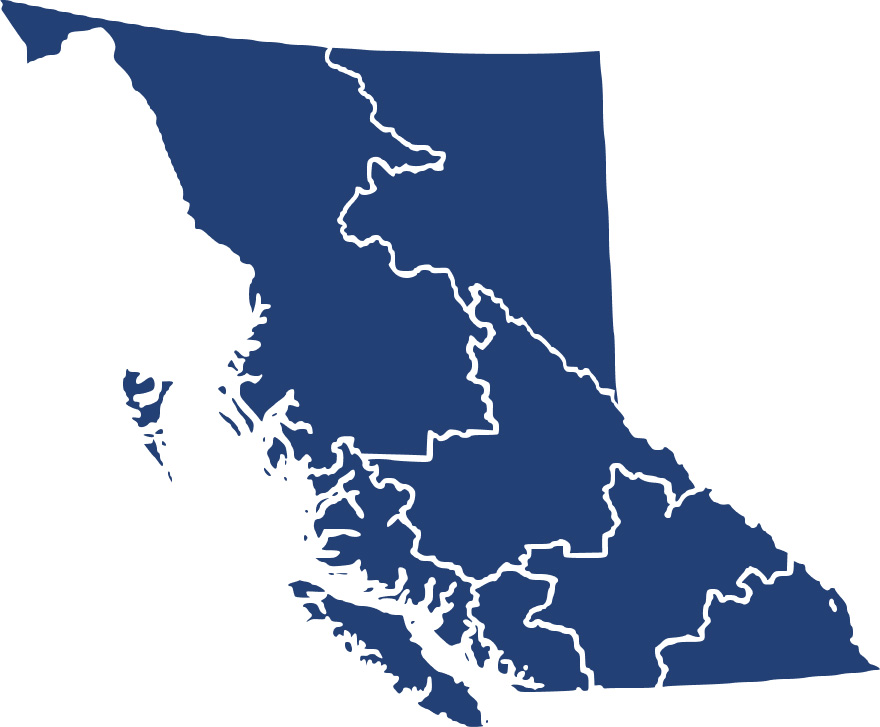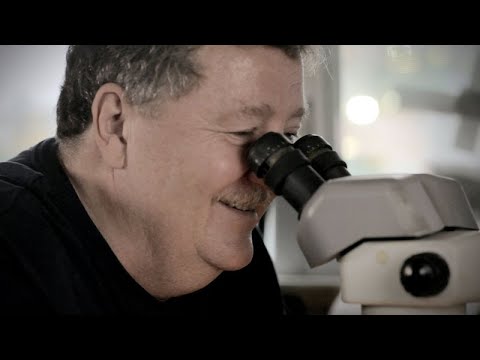Career Overview
Geological and mineral technologists and technicians provide technical support and services or may work independently in the fields of oil and gas exploration and production, geophysics, petroleum engineering, geology, mining and mining engineering, mineralogy, extractive and physical metallurgy, metallurgical engineering and environmental protection.
Duties
Geological and Mineral Technologists
- Conduct or direct geological, geophysical, geochemical, hydrographic or oceanographic surveys, prospecting field trips, exploratory drilling, well logging or underground mine survey programs
- Configure, operate and maintain geophysical survey and well logging instruments and equipment
- Prepare notes, sketches, geological maps and cross sections
- Prepare, transcribe or analyze seismic, gravimetric, well log or other geophysical and survey data • Assist engineers and geologists in the evaluation and analysis of petroleum and mineral reservoirs
- Prepare or supervise the preparation of rock, mineral or metal samples and perform physical and chemical laboratory tests
- Conduct or assist in environmental audits, in the design of measures to minimize undesirable environmental effects of new or expanded mining and oil and gas operations, and in the development of waste management and other related environmental protection procedures
- May supervise oil and gas well drilling, well completions and work-overs
- May conduct or supervise studies and programs related to mine development, mining methods, mine ventilation, lighting, drainage and ground control
- May assist engineers and metallurgists in specifying material selection, metal treatments or corrosion protection systems
- May assist hydrogeologists in evaluating groundwater and well circulation and in report preparation
- May develop specifications for heat treatment of metals or for welding, design welding fixtures, troubleshoot welding processes or quality problems and supervise welding projects
- May co-ordinate crew members' activities during seismic tests
Geological and mineral technicians
- Participate in geological, geophysical, geochemical, hydrographic or oceanographic surveys, prospecting field trips, exploratory drilling, well logging or underground mine survey programs and in environmental audits and related environmental protection activities
- Operate and maintain geophysical survey and well logging instruments and equipment
- Prepare notes, sketches, geological maps and cross sections
- Assist in preparing, transcribing or analyzing seismic, gravimetric, well log or other geophysical and survey data
- Assist in the preparation of rock, mineral or metal samples and in conducting physical and chemical laboratory tests
- Assist in hydrogeological field and laboratory studies and in preparation of reports
- Carry out a limited range of other technical functions in support of geology, geophysics and petroleum and mining engineering
Earnings
Earnings is income that workers receive in exchange for their labour. Depending on the type of employment, earnings can be in the form of wages (hourly), salaries (fixed monthly or annual) or self-employed earnings.
Work Environment
# Workers Employed
990% Employed Full Time
56%Geological and mineral technologists and technicians usually work a 35 to 40-hour week, however, extended hours or shift work may also be required. They may work either indoors in an office or laboratory or in field locations, such as mines, construction sites or wilderness areas while some workers may temporarily relocate to remote locations during field work.
Outdoor work sites can be dirty and noisy and safety precautions must be undertaken to reduce risks associated with field work. Some technologists and technicians perform field work during the summer months and indoor laboratory work during the winter.
Career Pathways
Mobility may be possible between geophysical technology and electronic technology, and also between some occupations in this group and related fields of civil engineering technology. In general however, limited mobility is available between the different occupations in this group.
Related Careers
Occupational Interests
It’s important to understand what kinds of occupations align with your interests.
For more about occupational interests visit Skills for the Future Workforce > Characteristics.
Here are the top occupational interest(s) for this career profile:
Job Titles
Education, Training and Skills
Geological and mineral technologists are usually required to complete a two to three-year college program in geological technology, mining technology, mineralogy or a related discipline. Geological and mineral technicians are usually required to complete a one to two-year college program in a similar discipline as technologists. Geophysics technologists are usually required to complete a two to three-year college program in electronics technology.
Professional certification for geological and mineral technologists and technicians is available through the Applied Science Technologists and Technicians of B.C. (ASTTBC)
Completion of an accredited diploma program and two years of industry work experience are required for Applied Science Technologist (AScT) designation and completion of an accredited certificate program and two years of industry work experience are required for Certified Technician (CTech) designation.
Certification is available for geomatics, metallurgical and gas and petroleum technical occupations.
For more information, please visit the ASTTBC website at www.asttbc.org.
Education programs in B.C.
The following program areas are related to this occupation:
- Mining and Petroleum (Oil and Gas) Related

Skills
Every job calls for a certain set of skills. Knowing those skills is the first step in finding a good career fit.
Here, you will find the 10 most relevant workplace skills. Some are more important to achieving success in a certain career than others. These skills may come naturally to you or you may need to gain them through education, training and experience.
See the list of work-related skills below, ranked in order of importance for this career. Check out the list and see if this career matches your skills—take that first step!
Understanding written sentences and paragraphs in work-related documents.
Using logic and reasoning to identify the strengths and weaknesses of alternative solutions, conclusions or approaches to problems.
Giving full attention to what other people are saying, taking time to understand the points being made, asking questions as appropriate, and not interrupting at inappropriate times.
Communicating effectively in writing as appropriate for the needs of the audience.
Talking to others to share information effectively.
Keeping track of and assessing your performance, other individuals, or organizations to make improvements or take corrective action.
Using scientific rules and methods to solve problems.
Managing one’s own time and the time of others.
Considering the relative costs and benefits of potential actions to choose the most appropriate one.
Being able to solve novel, ill-defined problems in complex, real-world settings.
Labour Market Statistics
Discover data, facts and information that have been gathered and analyzed. Learn about the characteristics of the economy and labour market in B.C.
Employment
Find out about employment types and trends by region and industry.
Employment
990Employment by Region















| Region | Employment | % Employment of this Occupation |
|---|---|---|
| Cariboo | 75 | 7.6% |
| Kootenay | 110 | 11.1% |
| Mainland/Southwest | 415 | 41.9% |
| North Coast and Nechako | 20 | 2.0% |
| Northeast | 30 | 3.0% |
| Thompson-Okanagan | 205 | 20.7% |
| Vancouver Island/Coast | 135 | 13.6% |
Labour Market Outlook
The B.C. Labour Market Outlook is a 10-year forecast of the expected supply and demand for labour in the province. It’s usually updated every year. The purpose is to provide British Columbians with the knowledge to make informed decisions on careers, skills training, education and hiring.
Forecasted Job Openings (2023-2033)
490Forecasted Job Openings
Forecasted Employment Growth Rate
Composition of Job Openings
Job Openings by Region (2023-2033)















| Region | Job Openings | Avg. Annual Employment Growth |
|---|---|---|
| Cariboo | 20 | 0.4% |
| Kootenay | 50 | -0.5% |
| Mainland/Southwest | 190 | 1.0% |
| North Coast and Nechako | 10 | 2.2% |
| Northeast | 10 | 0.9% |
| Thompson-Okanagan | 110 | 1.5% |
| Vancouver Island/Coast | 90 | 3.0% |
Industry Highlights
Learn about the opportunities in B.C.'s major industries, including employment trends, earning potential, locations of work and more.
Forecasted Job Openings by Industry
| Industry | Job Openings (2023-2033) |
|---|---|
| Mining And Oil And Gas Extraction | 210 |
| Professional, Scientific And Technical Services | 190 |
| Manufacturing | 30 |
| Public Administration | 20 |
| Construction | 10 |
Insights from Industry
There will be job openings due to the need to replace retiring workers, as well as the creation of new jobs.
Employment growth is expected for geological and mineral technologists and technicians in the mining sector as a result of exploration and mining activity. British Columbia's Oil and gas industry has also seen growth in recent years, as high prices increased production and exploration activities.
Demand for workers in the Professional business services industry is tied to a wide variety of other industries, including Manufacturing and Construction. Employment growth in this industry is expected to follow overall growth in the provincial economy.
Resources
-
Applied Science Technologists and Technicians of BC (ASTTBC)www.asttbc.org
-
B.C. Ministry of Energy, Mines and Petroleum Resourceswww2.gov.bc.ca/gov/content/governments/organizational-structure/ministries-organizations/ministries/energy-mines-and-petroleum-resources
-
Canadian Council of Technicians and Technologists (CCTT)www.cctt.ca
-
Canadian Institute of Mining, Metallurgy and Petroleum (CIM)www.cim.org
-
Careers in Oil + Gaswww.careersinoilandgas.com
-
Centre of Training Excellence in Mining (CTEM)www.bc-ctem.ca
-
MiHR - Careerswww.mihr.ca/careers
-
Mining Association of British Columbia (MABC)www.mining.bc.ca
-
Mining Association of Canada (MAC)www.mining.ca
-
Mining Industry Human Resources Council (MiHR)www.mihr.ca









